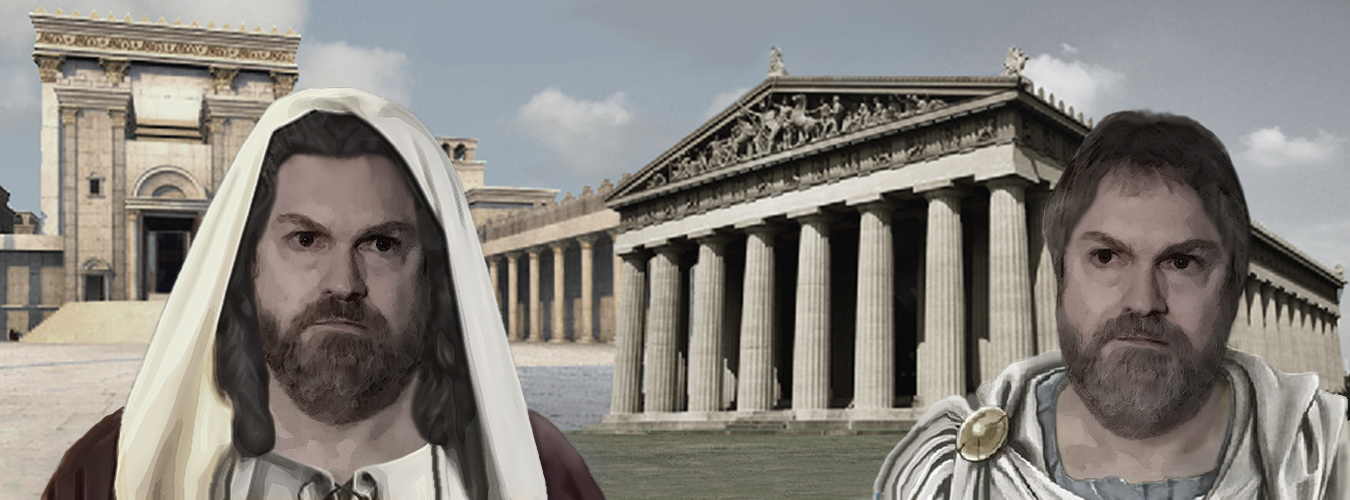 Baptists are members of various Protestant denominations and churches who believe that baptism should be performed only for professing believers who have reached the age of accountability, and that it must be done by complete immersion rather than sprinkling. Other beliefs include salvation through faith alone, eternal security, sola scriptura (scripture alone) as the rule of faith and practice, and the autonomy of the local congregation. Baptists recognize pastors and deacons as the only two ministerial offices.
Baptists are members of various Protestant denominations and churches who believe that baptism should be performed only for professing believers who have reached the age of accountability, and that it must be done by complete immersion rather than sprinkling. Other beliefs include salvation through faith alone, eternal security, sola scriptura (scripture alone) as the rule of faith and practice, and the autonomy of the local congregation. Baptists recognize pastors and deacons as the only two ministerial offices.
Diverse from their beginning, those identifying as Baptists today differ widely from one another in what they believe, how they worship, their attitudes toward other Christians, and their understanding of what is important in Christian discipleship.
Historians trace the earliest church labeled “Baptist” back to 1609 in Amsterdam, with English Separatist John Smyth as its pastor. In accordance with his reading of the New Testament, he rejected baptism of infants and instituted baptism only of believing adults. Baptist practice spread to England, where the General Baptists considered Christ’s atonement to extend to all people, while the Particular Baptists believed that it extended only to the elect. In 1638, Roger Williams established the first Baptist congregation in the North American colonies. In the mid-18th century, the First Great Awakening increased Baptist growth in both New England and the South. The Second Great Awakening in the South in the early 19th century increased church membership, as did the preachers’ lessening of support for abolition and manumission of slavery, which had been part of the 18th-century teachings. Baptist missionaries have spread their church to every continent.
The Baptist World Alliance reports more than 41 million members in more than 150,000 congregations. In 2002, there were over 100 million Baptists and Baptistic group members worldwide and over 33 million in North America. The largest Baptist association is the Southern Baptist Convention, with the membership of associated churches totaling more than 16 million.
Modern Baptist churches trace their history to the English Separatist movement in the century after the rise of the original Protestant denominations. This view of Baptist origins has the most historical support and is the most widely accepted. Adherents to this position consider the influence of Anabaptists upon early Baptists to be minimal. It was a time of considerable political and religious turmoil. Both individuals and churches were willing to give up their theological roots if they became convinced that a more biblical “truth” had been discovered.
During the Protestant Reformation, the Church of England (Anglicans) separated from the Roman Catholic Church. There were some Christians who were not content with the achievements of the mainstream Protestant Reformation. There also were Christians who were disappointed that the Church of England had not made corrections of what some considered to be errors and abuses. Of those most critical of the Church’s direction, some chose to stay and try to make constructive changes from within the Anglican Church. They became known as “Puritans” and are described by Gourley as cousins of the English Separatists. Others decided they must leave the Church because of their dissatisfaction and became known as the Separatists.
Historians trace the earliest Baptist church back to 1609 in Amsterdam, with John Smyth as its pastor. Even prior to that, in 1606, John Smyth, a Fellow of Christ’s College, Cambridge, had broken his ties with the Church of England. Reared in the Church of England, he became “Puritan, English Separatist, and then a Baptist Separatist,” and ended his days working with the Mennonites. He began meeting in England with 60–70 English Separatists, in the face of “great danger.” The persecution of religious nonconformists in England led Smyth to go into exile in Amsterdam with fellow Separatists from the congregation he had gathered in Lincolnshire, separate from the established church (Anglican). Smyth and his lay supporter, Thomas Helwys, together with those they led, broke with the other English exiles because Smyth and Helwys were convinced they should be baptized as believers. In 1609 Smyth first baptized himself and then baptized the others.
A minority view is that early seventeenth-century Baptists were influenced by (but not directly connected to) continental Anabaptists. According to this view, the General Baptists shared similarities with Dutch Waterlander Mennonites (one of many Anabaptist groups) including believer’s baptism, religious liberty, separation of church and state, and Arminian views of salvation, predestination and original sin. Representative writers including AC Underwood and William R Estep. Gorley write that among some contemporary Baptist scholars who emphasize the faith of the community over soul liberty, the Anabaptist influence theory is making a comeback.
However, the relations between Baptists and Anabaptists were early strained. In 1624, the then five existing Baptist churches of London issued a condemnation of the Anabaptists. Furthermore, the original group associated with Smyth and popularly believed to be the first Baptists broke with the Waterlander Mennonite Anabaptists after a brief period of association in the Netherlands.
Prior to the 20th century, Baptist historians generally wrote from the perspective that Baptists had existed since the time of Christ. Proponents of the Baptist perpetuity view consider the Baptist movement to have always been separate from Catholicism and in existence prior to the Protestant Reformation.
The perpetuity view is often identified with The Trail of Blood, a pamphlet by J.M. Carrol published in 1931. Other Baptist writers holding the perpetuity view are John T. Christian, Thomas Crosby, G. H. Orchard, J. M. Cramp, William Cathcart, Adam Taylor and D. B. Ray This view was also held by English Baptist preacher, Charles Spurgeon as well as Jesse Mercer, the namesake of Mercer University.
The rise of theological modernism in the latter 19th and 20th century also greatly affected Baptists. The Landmark movement, already mentioned, has been described as a reaction against incipient modernism among Southern Baptists. In England, Charles Haddon Spurgeon fought against modernistic views of the Scripture in the Downgrade Controversy and severed his church from the Baptist Union as a result.
The Northern Baptist Convention in the United States had internal conflict over modernism in the early 20th century, ultimately embracing it. Two new conservative associations were founded as a result: the General Association of Regular Baptist Churches in 1933 and the Conservative Baptist Association of America in 1947.
Following similar conflicts over modernism, the Southern Baptist Convention adhered to conservative theology as its official position. Two new Baptist groups were formed by moderate Southern Baptists who disagreed with the direction in which the Southern Baptist Convention was heading: the Alliance of Baptists in 1987 and the Cooperative Baptist Fellowship in 1991. Members of both groups originally identified as Southern Baptist, but over time the groups “became permanent new families of Baptists.”

